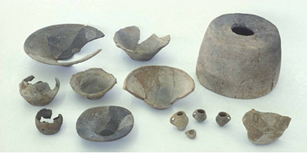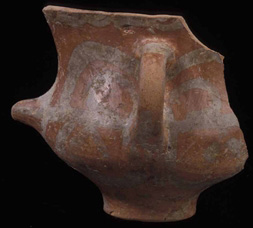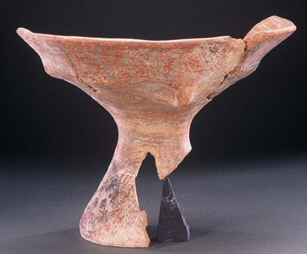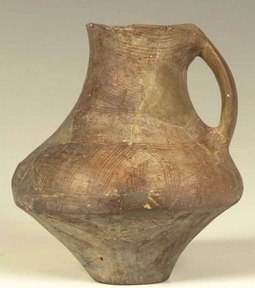 |
The inhabitants of Dikili Tash used a wide range of vessels. Most of those recovered were made of clay, but some were of stone, and we should of course not forget those made of perishable materials (wood, leather, basketry) that have not been preserved. These fulfilled a variety of everyday needs: temporary storage of liquid or solid foodstuffs, food preparation with or without heating, food consumption on an individual or collective basis, etc. Vessels were also used for less common purposes, such as the filtering of various substances, lighting, or the purification of air by burning aromatics. Unfired clay vessels were also used, but these have only been preserved when baked accidentally: these are big indoor storage jars.
|
 |
 |
Petrographic and chemical analyses show that the majority of vessels were produced locally, i.e. in the settlement itself or nearby, although there is so far no trace of structures connected with pottery production. Conversely, local manufacture of stone vessels is not at all certain : white marbles and other kinds of limestone are abundant in the region, but there is no proof that they were used for the vessels found in the Neolithic settlement.
Several elements suggest that a direct link existed between the intended function of the ceramic vessels and their manufacture (choice of raw materials, shaping, surface treatment, execution and display of a decoration). This does not mean, however, that the relation was univocal (one ceramic “recipe” = one function) or permanent. There are many examples of vessels) used obviously for a different purpose than the presumed original one: they show that, like in all societies, Neolithic people used their utensils according to the needs and opportunities of the moment.
|
 |





